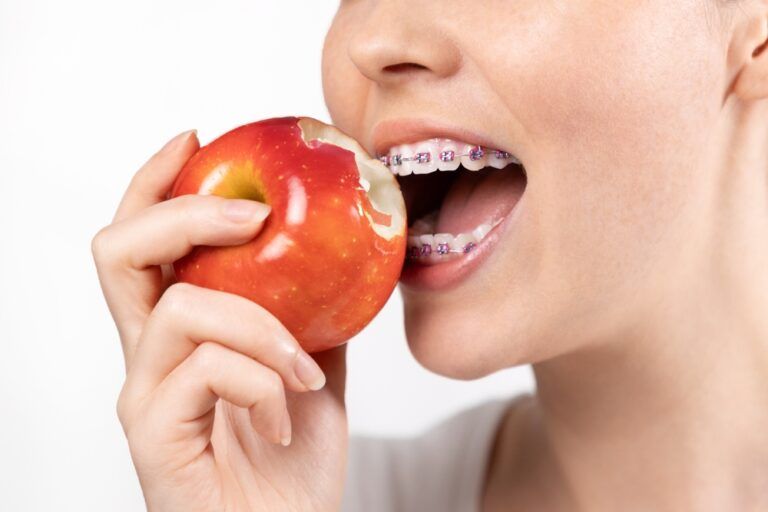How Orthodontics Can Improve Your Bite and Chewing

A well-aligned bite plays a crucial role in overall oral health, from efficient chewing to long-term jaw comfort. For residents of Glendale, CA, understanding the relationship between orthodontics and functional improvements in bite and chewing can help you make informed decisions about your dental health. Orthodontics is not just about achieving a straighter smile; it addresses the mechanics of your bite, improving daily functions and preventing potential complications.
The Connection Between Bite Alignment and Chewing Efficiency
Your bite, also known as occlusion, is how your upper and lower teeth meet when you close your mouth. A misaligned bite can create a ripple effect, impacting how efficiently you chew your food. When teeth don’t fit together properly, it requires more effort to break food down, often leading to incomplete chewing. This can contribute to digestive issues, increased tooth wear, and even discomfort in the jaw joint over time.
Orthodontic treatments work by aligning the teeth and jaws so they function harmoniously. By correcting issues such as overbites, underbites, crossbites, and open bites, orthodontics helps the teeth work together effectively. This not only improves the mechanics of chewing but also reduces stress on the jaw muscles, making eating a more comfortable and efficient experience.
Common Bite Issues That Affect Chewing
Several types of bite issues can interfere with the ability to chew properly. These include:
- Overbite: When the upper teeth excessively overlap the lower teeth.
- Underbite: When the lower teeth extend beyond the upper teeth.
- Crossbite: When the upper and lower teeth do not align properly from side to side.
- Open bite: When the upper and lower teeth do not touch when the mouth is closed.
- Crowding or spacing issues: When teeth are misaligned or spaced too far apart, leading to uneven bite pressure.
Each of these conditions can cause uneven wear on the teeth and put extra strain on the jaw, making orthodontic evaluation an important step in protecting your oral health.
How Orthodontics Corrects Bite Problems
Orthodontic treatments are designed to gradually reposition the teeth and jaws, creating a healthier and more functional bite. Depending on the severity and type of misalignment, treatment plans can vary in length and approach, but they share the same ultimate goal: improving function while enhancing appearance.
Braces, clear aligners, and other orthodontic appliances gently apply consistent pressure to move teeth into their ideal positions. Over time, the bite becomes balanced, enabling more efficient chewing and reducing discomfort during meals. This process not only improves oral function but also protects the teeth from premature wear and other issues caused by misalignment.
Benefits of an Improved Bite
An improved bite provides more than just aesthetic value. When your teeth are properly aligned, you experience a wide range of functional and health benefits. These include better digestion, since well-chewed food is easier for the stomach to process, and reduced strain on the jaw joint, which can minimize the risk of developing temporomandibular joint (TMJ) disorders.
Additionally, a balanced bite allows for even distribution of pressure across the teeth, helping to prevent fractures, chipping, or excessive enamel wear. These benefits demonstrate that orthodontics is a long-term investment not only in your smile but also in your overall oral health.
Long-Term Oral Health Improvements
Orthodontic treatments have lasting effects that go beyond bite and chewing improvements. By correcting alignment issues, you reduce the likelihood of gum recession, tooth mobility, and enamel erosion. Properly aligned teeth are also easier to clean, lowering the risk of cavities and gum disease.
For individuals who previously experienced pain or difficulty when eating, the relief provided by a corrected bite often leads to improved nutrition and a more enjoyable eating experience. This improvement in quality of life is one of the most significant yet often overlooked benefits of orthodontic care.
What to Expect During the Orthodontic Process
The orthodontic journey typically begins with a thorough evaluation that includes X-rays, photographs, and impressions or digital scans of your teeth. From there, a personalized treatment plan is developed to address the specific bite issues you’re facing. Depending on your needs, treatment options may include traditional braces, ceramic braces, or clear aligners.
Throughout the treatment period, regular checkups are scheduled to ensure that the teeth are moving as planned and that adjustments are made when needed. After active treatment, retainers are often recommended to help maintain the new bite alignment and ensure that the results last for years to come.
The Role of Orthodontics in Overall Wellness
Improving your bite and chewing function can have a surprisingly positive impact on overall wellness. Proper chewing supports better digestion and nutrient absorption, while alleviating jaw pain can enhance comfort during everyday activities like speaking and smiling. Over time, these changes contribute to improved oral health, greater confidence, and a healthier lifestyle overall.
For individuals in Glendale, CA, exploring the educational aspects of orthodontic care can provide valuable insights into how bite correction promotes not just a better smile, but also a healthier and more comfortable way of living.
Closing Thoughts
Understanding the relationship between orthodontics and bite function underscores the importance of proper alignment in maintaining oral health and overall well-being. At Massih Orthodontics in Glendale, CA, the focus on education highlights how improving bite mechanics can lead to lasting benefits that extend beyond appearance. Whether you’re considering orthodontics for yourself or a family member, recognizing its impact on chewing and long-term oral health can help you make an informed choice.
References
Proffit, W. R., Fields, H. W., & Larson, B. E. (2018). Contemporary Orthodontics. Mosby.
Graber, L. W., Vanarsdall, R. L., & Vig, K. W. (2016). Orthodontics: Current Principles and Techniques. Elsevier Health Sciences.
Melsen, B., & Verna, C. (2000). Functional occlusion: Theory and practice. Angle Orthodontist.

Recent Comments